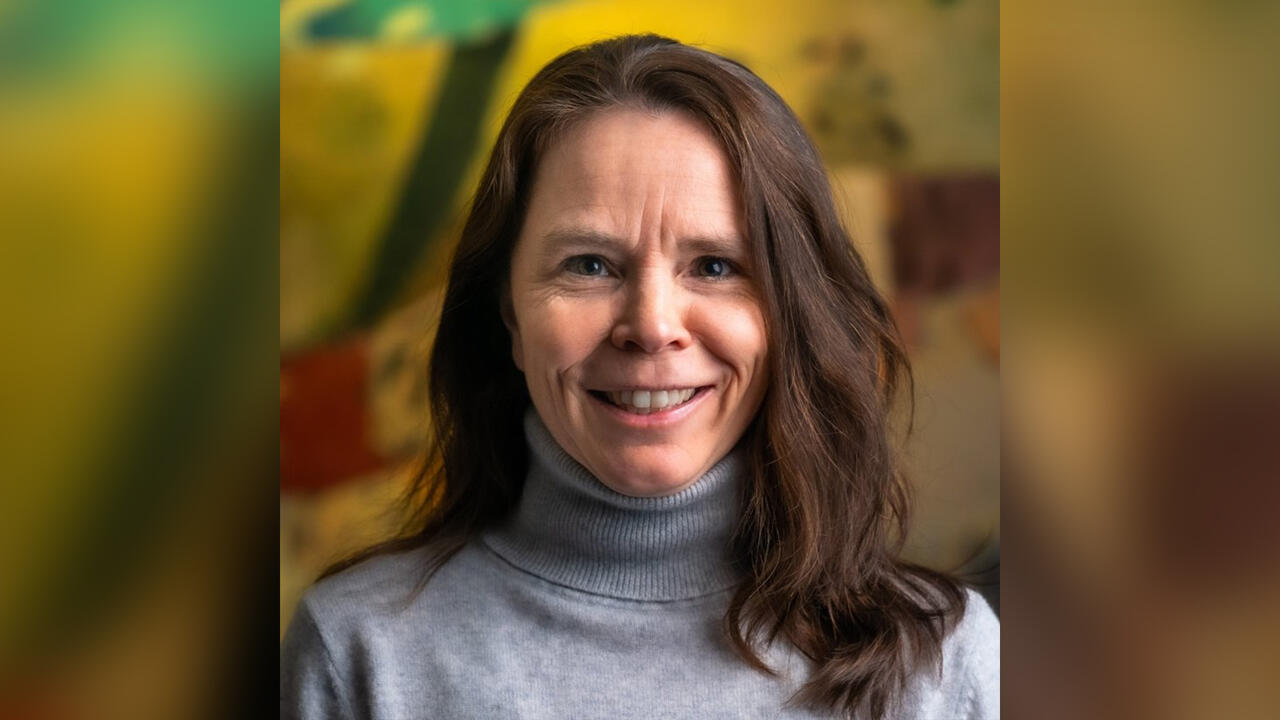
Teaching to Understand: Professor and Climate Scientist Jennifer Wilcox ’98
In a way, Jennifer Wilcox ’98 has always been an educator. She started teaching in high school—and her first student was herself.
Interested in science and hoping to become a doctor, Wilcox had set her sights on Wellesley because of its graduates’ high acceptance rate to medical school. But her school in rural Maine did not offer the advanced levels of math and foreign languages the College recommended for applicants.
So Wilcox bought a textbook and taught herself calculus, and she set up an independent study with the high school Latin teacher, eventually becoming so advanced that she taught the younger Latin students while her teacher was on leave. Wilcox was not only accepted to Wellesley, she was placed into Calculus II when she arrived on campus.
“I knew I had what it took to create my own path, but many students are born without that,” Wilcox says. “It’s up to the teachers who impact us to be able to empower us and enable success.”
Now Wilcox is a professor in the chemical and biomolecular engineering department and in the Kleinman Center for Energy Policy at the University of Pennsylvania, where she oversees the Clean Energy Conversions Lab. Prior to joining Penn in 2020, she was a senior fellow at the World Resources Institute, where she led the Carbon Removal Program. She is currently on leave from the university, working for the Biden administration as the principal deputy assistant secretary in the Office of Fossil Energy and Carbon Management at the Department of Energy (DOE). In that role, Wilcox works on developing mitigation and adaptation strategies to minimize climate and environmental impacts from our dependence on fossil fuel and help put the United States on a path to net-zero carbon emissions by 2050.
“In addition to avoiding emissions into the atmosphere, what we put into the air, we have to take back out,” Wilcox says. She explains that to remove carbon from the air it’s not enough to plant more trees or use chemical separation processes: “It’s not going to be one or the other. We have to invest in all of these approaches if we are going to get to that finish line in time.” She and her DOE team are also working toward allocating the billions of dollars from the Bipartisan Infrastructure Law to demonstrate new technologies for managing carbon emissions.
I knew I had what it took to create my own path, but many students are born without that. It’s up to the teachers who impact us to be able to empower us and enable success.
Jennifer Wilcox ’98
This spring, Wilcox Zoomed into ES 125H/PEAC 125H: The Climate Crisis to talk with Wellesley and Olin students. From the packed auditorium in the Science Complex, they asked about her work and how to join the field of climate science. Wilcox reminded them that this work is always going to need more people––the U.S. may reach its net-zero greenhouse gas goals, but other nations need to do the same. “We all live in the same greenhouse,” she told them. “It’s really important to have that context.”
When Wilcox was a student at Wellesley, she never dreamed she’d be a nationally recognized expert on carbon capture. Initially, she followed the pre-med track as she had planned and took the Medical College Admission Test (MCAT). But when it came time to apply to medical school, she realized she wanted to become a professor.
Wilcox started a Ph.D. program in pure math in Portland, Ore., but she found the material too abstract and theoretical. “I always liked the applied part of math, where you arrive at an answer that you can draw a box around,” she says, and she ultimately left the program. When she got tired of the rainy Pacific Northwest weather, she took a friend’s suggestion and headed to Tucson, Ariz., where she was told it was “sunny every day.” Once there, Wilcox emailed every professor in the mathematics department at the University of Arizona asking if any students were in need of a math tutor. Only one professor wrote back––his sister had gone to Wellesley––and when she told him she preferred practical applications of math and enjoyed chemistry, he offered a suggestion: “What about chemical engineering?”
That shaped her next chapter. She enrolled at the University of Arizona, where she earned her M.A. in physical chemistry and Ph.D. in chemical engineering in four years while teaching math and chemistry at a community college and waiting tables. She went on to teach chemical engineering at a number of universities, including Worcester Polytechnic Institute and the Colorado School of Mines, before arriving at Penn. She has written a textbook on carbon capture, and she gave a TED talk about removing CO2 from the atmosphere that has received over 3.5 million views. “I’m always trying to help students find their way in this field,” she says.
Even now, while on leave from Penn, Wilcox has been finding opportunities to teach. Giving the guest lecture to Wellesley and Olin students was one. The open-source carbon dioxide removal primer she spearheaded in 2021, alongside 40 other scientists in her field, was another. “The first draft of the primer was primarily written by students and postdocs,” Wilcox says. “The idea was for the first drafts to be written by those who are learning in real time. In order to teach well, you have to understand well, right? So I wanted the students to write the content—they will be the best teachers, because they are trying to understand it themselves.”
Wilcox also brings her teaching experience to the DOE, where she has encouraged a reevaluation of the metrics it uses for assessing applicants for jobs and internships.
“GPA should not be the greatest weight at the end of the day,” Wilcox says. “The students with 4.0s are going to find opportunities––they’re going to be just fine. I want to look out for the students on the borderline. Students who get As will often get As. I like to aim at the B and C students. I feel like those are the ones I’m going to potentially impact.”
Additionally, Wilcox keeps an eye out for students who, like her, come from under-resourced backgrounds and those who haven’t yet figured out what they want to study. Wilcox reminds her students at Penn that it’s never too late to transition to a different field, citing her own evolution from pre-med to pure math to chemical engineering. Everything they have already done has value and can be added to a new trajectory, she assures them.
“It’s really important that you’re happy in what you’re doing,” she says. “Listen to yourself, and don’t give yourself a hard time. Every one of the decisions we make is part of the master plan at the end of the day.”



